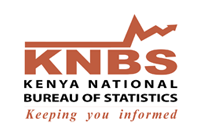 Kenya, like all African countries, focused on poverty alleviation at independence, perhaps due to the level of vulnerability of its populations but also as a result of the ‘trickle down’ economic discourses of the time, which assumed that poverty rather than distribution mattered – in other words, that it was only necessary to concentrate on economic growth because, as the country grew richer, this wealth would trickle down to benefit the poorest
Kenya, like all African countries, focused on poverty alleviation at independence, perhaps due to the level of vulnerability of its populations but also as a result of the ‘trickle down’ economic discourses of the time, which assumed that poverty rather than distribution mattered – in other words, that it was only necessary to concentrate on economic growth because, as the country grew richer, this wealth would trickle down to benefit the poorest
sections of society. Inequality therefore had a very low profile in political, policy and scholarly discourses. In recent years though, social dimensions such as levels of access to education, clean water and sanitation are important in assessing people’s quality of life. Being deprived of these essential services deepens poverty and reduces people’s well-being. Stark differences in accessing these essential services among different groups make it difficult to reduce poverty even when economies are growing. According to the Economist (June 1, 2013), a 1% increase in incomes in the most unequal countries produces a mere 0.6 percent reduction in poverty. In the most equal countries, the same 1% growth yields a 4.3% reduction in poverty. Poverty and inequality are thus part of the same problem, and there is a strong case to be made for both economic growth and redistributive policies.
From this perspective, Kenya’s quest in vision 2030 to grow by 10% per annum must also ensure that inequality is reduced along the way and all people benefit equitably from development initiatives and resources allocated. Since 2004, the Society for International Development (SID) and Kenya National Bureau of Statistics (KNBS) have collaborated to spearhead inequality research in Kenya. Through their initial publications such as ‘Pulling Apart:Facts and Figures on Inequality in Kenya,’ which sought to present simple facts about various manifestations of inequality in Kenya, the understanding of Kenyans of the subject was deepened and a national debate on the dynamics, causes and possible responses started.The report ‘Geographic Dimensions of Well-Being in Kenya:
Who and Where are the Poor?’ elevated the poverty and inequality discourse further while the publication ‘Readings on Inequality in Kenya: Sectoral Dynamics and Perspectives’ presented the causality, dynamics and other technical aspects of inequality.
KNBS and SID in this publication go further to present monetary measures of inequality such as expenditure patterns of groups and non-money metric measures of inequality in important livelihood parameters like employment, education, energy, housing, water and sanitation to show the levels of vulnerability and patterns of unequal access to essential social services at the national, county and constituency levels.
We envisage that this work will be particularly helpful to county leaders who are tasked with the responsibility of ensuring equitable social and economic development while addressing the needs of marginalized groups and regions. We also hope that it will help in informing public engagement with the devolution process and be instrumental in formulating strategies and actions to overcome exclusion of groups or individuals from the benefits of growth and development in Kenya.
It is therefore our great pleasure to present ‘Exploring Kenya’s Inequality: Pulling Apart or Pooling Together?’
